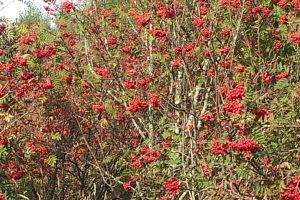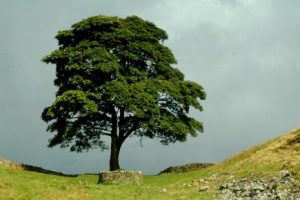When is the Best time for Rowan Tree Pruning?

Autumn to early winter
Expert insight into the best time to prune a rowan tree; why rowan tree pruning is important, and how to identify common rowan tree diseases.
The rowan tree, or Sorbus aucuparia to give it its Latin name, is a UK native species. Rowan is also known as the mountain ash due to the fact it is able to survive high altitudes, and because its pinnate leaves are very similar to those of the common ash. However, the two are not related.
Other names for the rowan tree are witch wiggin, keirn and cuirn. The tree is deciduous and will grow up to 15 metres in height, and can live for up to 200 years. In spring, the rowan tree will blossom with beautiful white flowers, followed by stunning bursts of red berries in late summer to early autumn.
The name witch wiggin came about as the rowan tree was once upon a time planted by homeowners in order to protect against witches; in Ireland it was grown to ward off evil spirits and in Wales the rowan tree was a popular sight in churchyards. In Scotland, the felling of a rowan tree was forbidden. The bright red berries were considered the best possible colour to fight evil, which is why the rowan tree has been associated with witches and magic for many years and was in fact known in Celtic as the wizards’ tree.
Trusted & Top rated Tree Surgeon in Essex
An Essex Tree Surgeon you can trustExcellent & friendly service at superb rates
Why prune a rowan tree?
The abundant fruit of the rowan tree can weigh heavy on its branches, so it’s vital to regularly prune the tree in order to encourage a strong framework to support it. Without a strong framework, you will find branches regularly breaking off under the strain. This is both dangerous and not healthy for the tree.
Regular pruning generally promotes the good health of a tree by allowing air and sunlight to circulate. It also allows the wind to pass through easily, which prevents storm damage.
The rowan tree also benefits from having damaged or crossing branches removed so as to leave a clear trunk up to two metres in height.
When is the best time for rowan tree pruning?
When you prune a tree, it will naturally bleed sap if it is actively growing. This is why it’s always best practice to avoid pruning during the growing season. In the case of the rowan tree, autumn to early winter is considered the best time.
If you are pruning to remove deadwood for safety reasons, you can proceed at any time if there is an impending risk of personal injury or property damage.
What to look for when pruning a rowan tree
The rowan tree can suffer from fireblight, and may be susceptible to silver leaf disease. Look out for wilting blossoms, cankers and oozing slime; or in the case of silver leaf disease, silvery leaves and branch dieback. Aphids, blister mites and sawflies can also be an issue.
Tree Preservation Orders and Rowan Tree Pruning
You should never proceed with any tree work including rowan tree pruning unless you are satisfied that there is not a Tree Preservation Order (TPO) in place. If there is, will need permission before you go ahead. This can take up to eight weeks to come through. What’s more, if the tree is situated in a conservation area, permission must be gained before commencing works of any kind.
The importance of rowan tree pruning expertise
A rowan tree is a very attractive tree and often used for ornamental purposes. If you want to maintain its beauty and ensure its long term health, you will need to take good care of it.
Tree surgeons are trained to spot diseases and pest infestations in all species of trees. They are qualified in treating these issues and are also fully aware of the best pruning techniques, and the best time to do so. If you are in any way unsure as to how to best care for your rowan tree, it is advisable to seek expert assistance. Always make sure you check the qualifications and references of your chosen tree surgeon.
If you have a rowan tree that needs pruning, why not talk to Tree Works? As fully qualified and highly experienced Trading Standards and local authority approved tree surgeons, we are able to offer specialist expertise across all areas of rowan tree pruning. For a free, no-obligation quotation, contact our friendly experts on 07781 416 354 or get in touch here.


